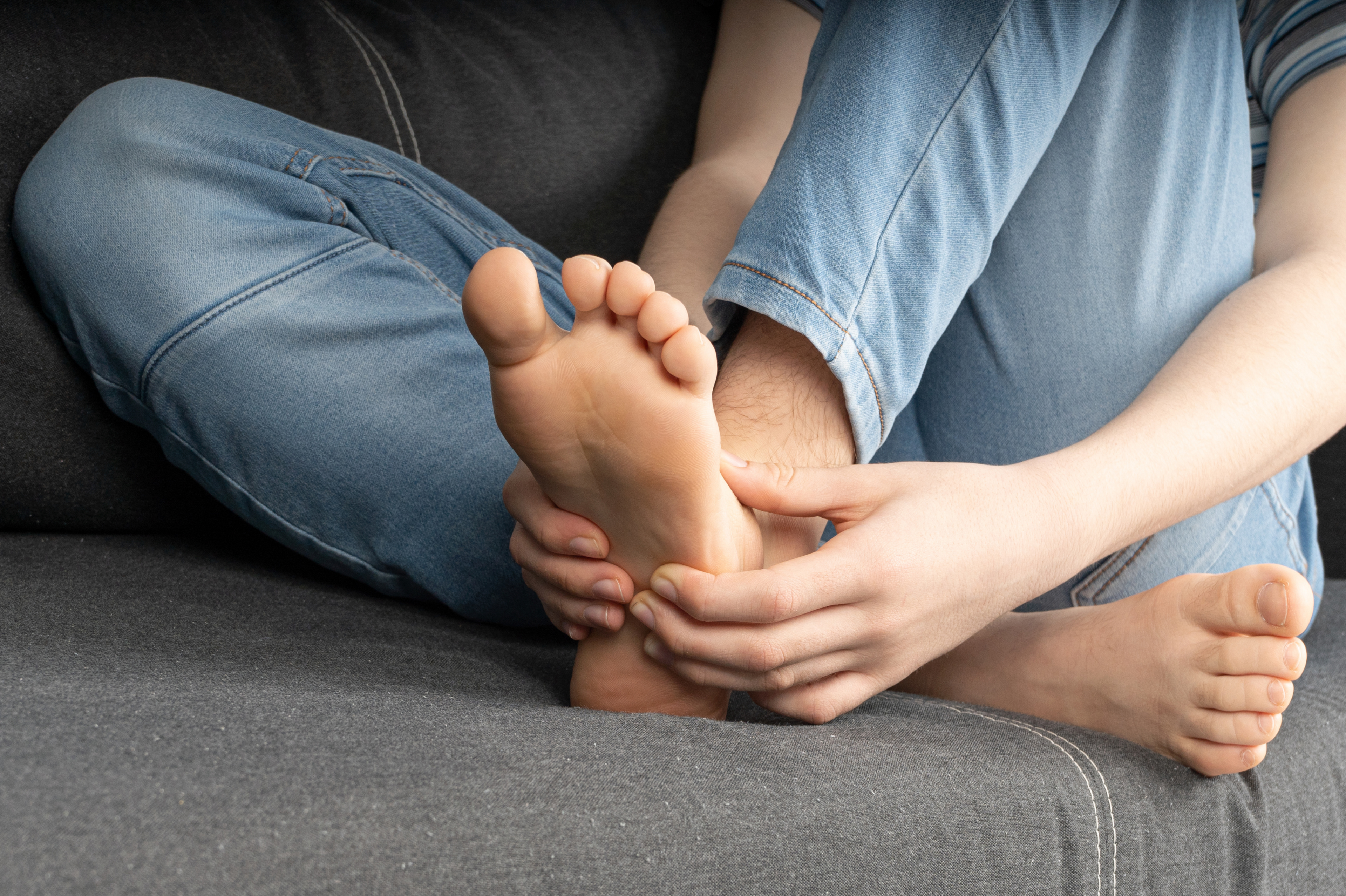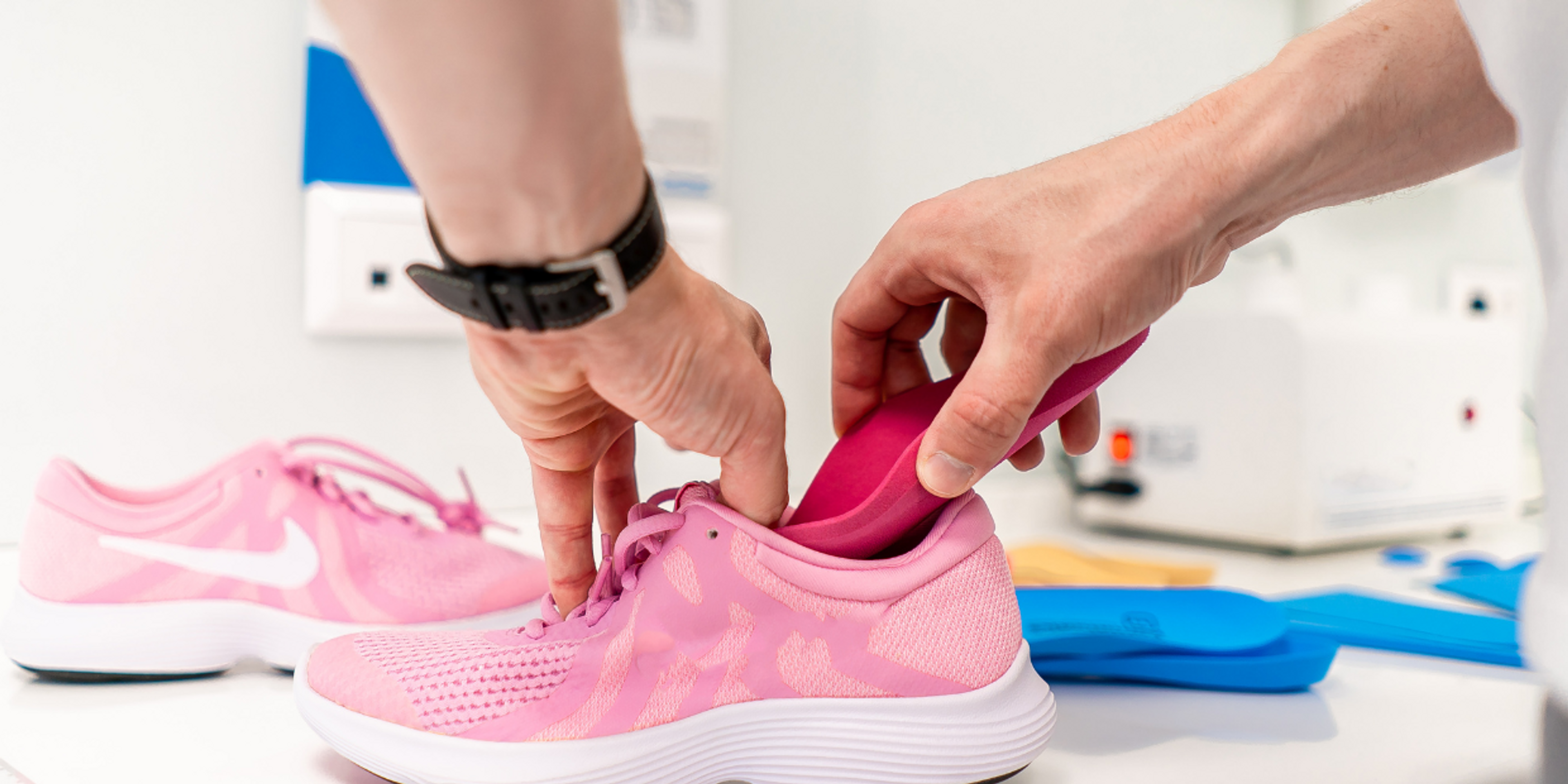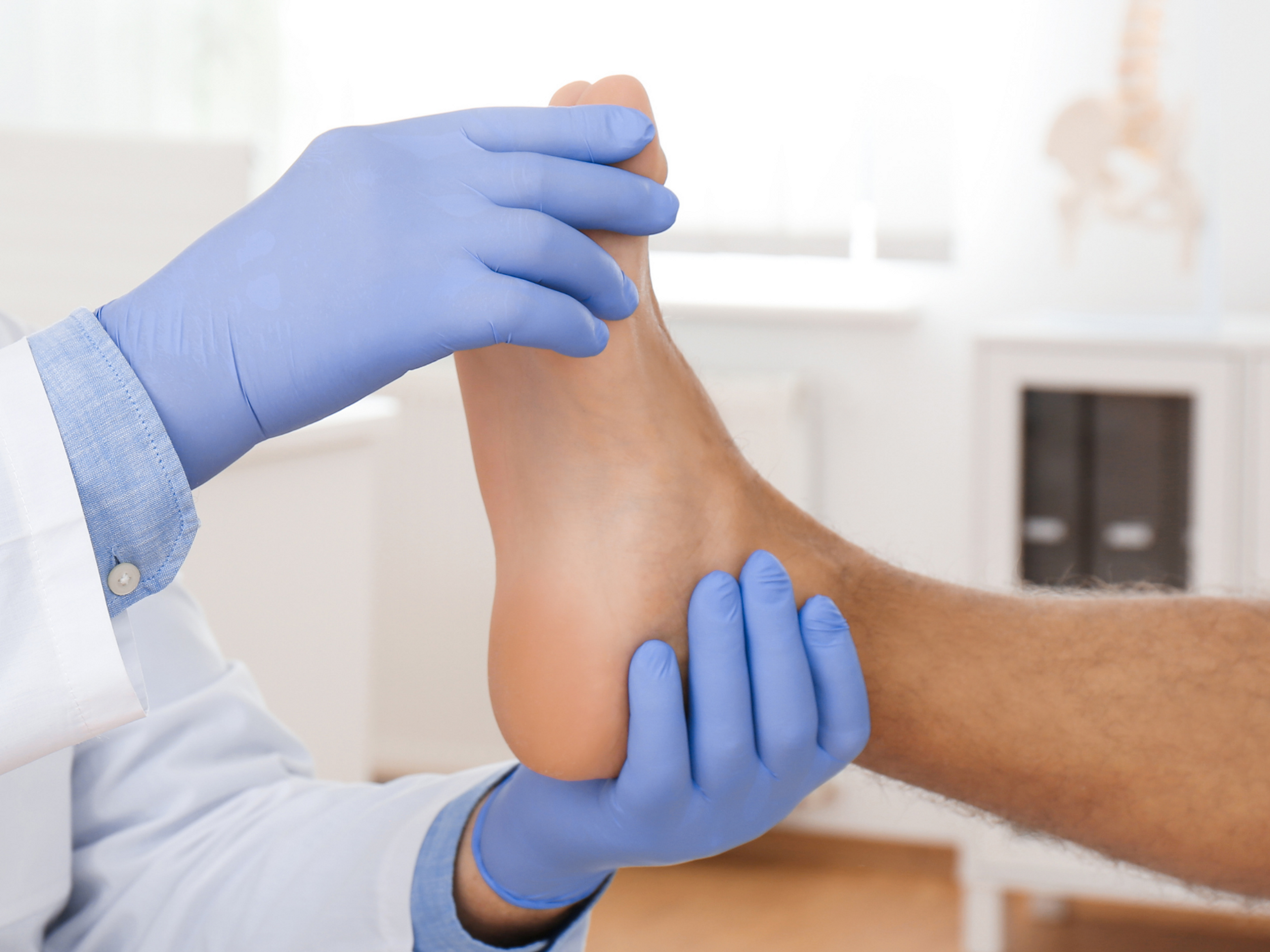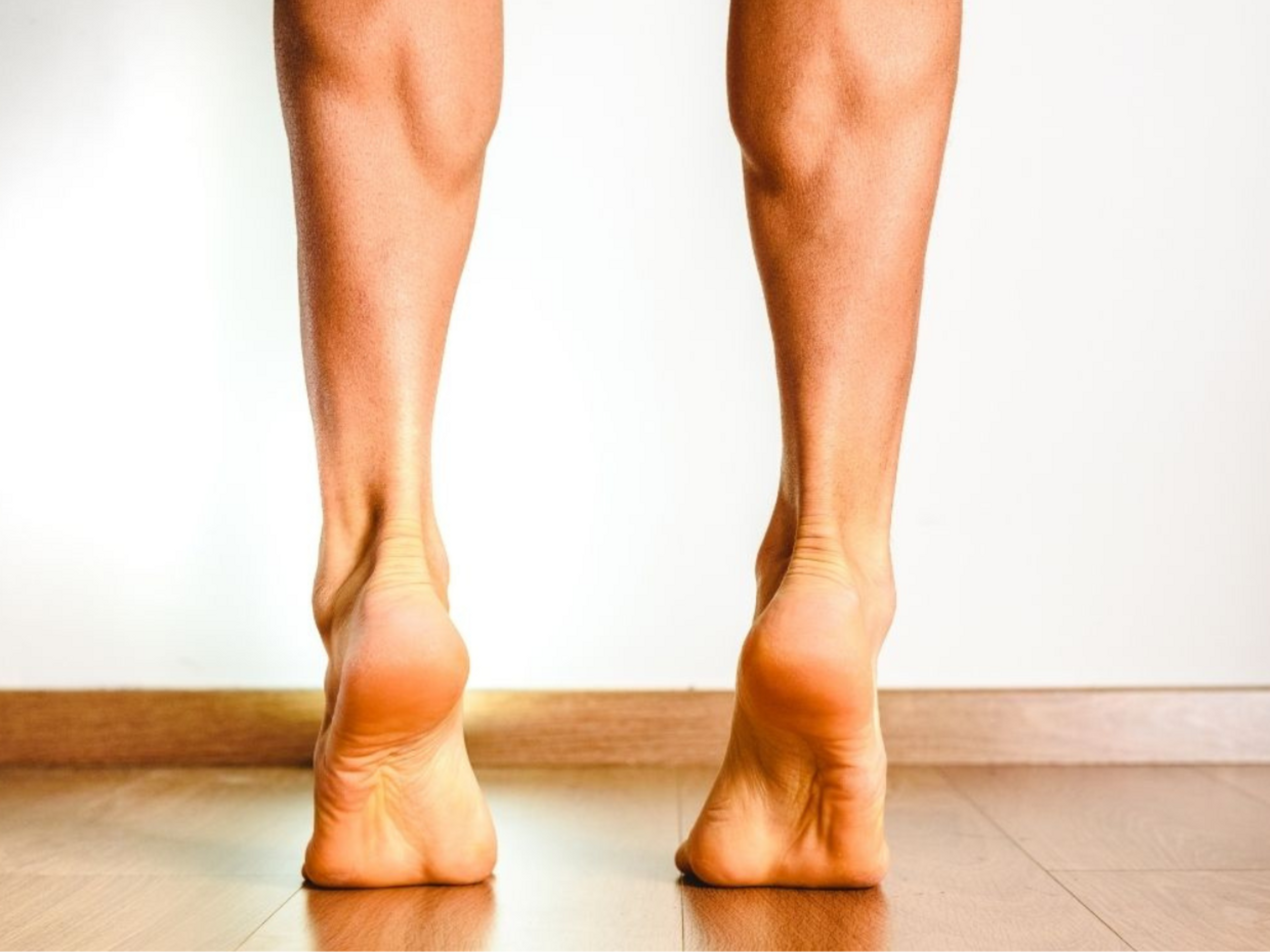Other conditions can feel similar to Plantar Fasciitis - Here's how to tell the difference
What does plantar fasciitis feel like?
Plantar fasciitis causes pain and stiffness on the inner part of your foot arch, where the plantar fascia attaches to your heel bone. It can feel like a sharp stabbing, achy, or throbbing pain.
You may also notice a puffiness or a little bit of swelling in that specific area.
The pain from plantar fasciitis usually feels at its worst first thing in the morning or when you get up from sitting for a long time, and people often have to hobble around until it's warmed up a bit.
Discomfort with walking and running can vary depending on how aggravated your plantar fascia is:
- In mild cases, you may find that it hurts a bit to start with but then actually warms up and feels OK, just to hurt more afterward.
- In severe cases, you'll likely find that even short walks or runs worsen your pain.
Treatment for plantar fasciitis should always start with looking at all your activities (walking, standing, running, etc.) and figuring out how to adapt them to allow your plantar fascia a chance to recover and heal.
Standing for extended periods also tends to flare plantar fasciitis up.
Rest usually helps plantar fasciitis feel better, and it doesn't tend to hurt while sleeping or lying in bed.
Want help with your heel pain? The plantar fasciitis rehab plan in the Exakt Health app offers personalized guidance and evidence-based tips for smoothly and effectively managing your plantar fasciitis. You can start using it at any stage of your recovery, and the app will adjust to your current condition, helping you progress towards a full return to activity.
Can plantar fasciitis cause calf pain?
Yes, especially if you’ve had it for a while, plantar fasciitis can cause your calf to tighten up and hurt. Doing gentle calf stretches or massaging your calf may provide temporary relief, but you’ll only get rid of the calf pain if you treat the plantar fasciitis.
However, this is only true if your foot pain started first.
Can plantar fasciitis cause ankle, knee, hip, or back pain?
Yes, absolutely. It’s natural to adapt how you walk when you have pain in your foot. This altered gait pattern can cause strain on the muscles, ligaments, or joints in the rest of your leg and cause them to hurt. This is one of the reasons why it’s important not to try and push through pain.
The same rule mentioned in the previous section applies here. Suppose your pain started higher up in your body and eventually caused your foot to hurt. In that case, it is likely not plantar fasciitis but referred pain from a different part of your body.
Rather than focussing treatment on your foot, you’ll have to find and treat whatever structure is referring the pain to your foot. I discuss some of them in the sections below.
Can plantar fasciitis cause ankle swelling?
No. The swelling from plantar fasciitis is only located in the inner arch area, close to the heel bone. Swelling around the ankle can come from the ankle joint or any of the tendons crossing it.
The tibialis posterior tendon, for instance, can cause swelling on the inside of the ankle and pain that feels similar to plantar fasciitis when it’s injured close to where the tendon is attached under the foot.
Can plantar fasciitis cause swelling on top of foot?
No, definitely not. Swelling on top of the foot will likely be coming from either the little joints in your foot, the bones (stress fractures), or the tendons (tenosynovitis) on top of your foot.
What conditions are often misdiagnosed as plantar fasciitis?
Plantar Fasciitis or Heel Spur
The diagnoses "plantar fasciitis" and "heel spur" are often used interchangeably to describe the same condition.
Researchers have recently proposed that calling heel pain by either name is too simplistic. They suggest that we instead talk about "plantar heel pain" because there is often not just one thing causing the pain.
Whenever they scan people's feet who complain of heel pain, they often find a combination of things show up, including:
- Bone edema (swelling inside the bone)
- Changes to the heel fat pad
- Injuries to the plantar fascia
- Heel spurs
You can read more about what heel spurs are and how they impact your treatment and recovery here. But in short, there really isn't a significant difference between the diagnosis of heel spur and plantar fasciitis.
Plantar Fasciitis or Stress Fracture
Calcaneal (heel bone) stress fractures create pain that can easily be confused with plantar fasciitis. Endurance athletes with a pronounced heel-strike running style or military recruits are prone to developing stress fractures in their heels.
However, if you have low bone density (osteoporosis), you can develop a stress fracture without doing any sport.
How can you decide if your pain is more likely plantar fasciitis or a stress fracture?
When you have a stress fracture in your heel, it is often painful to squeeze the sides of the heel bone – this is not the case when you have plantar fasciitis. However, the only accurate way to diagnose a stress fracture is through an MRI scan. X-rays don't always show it either.
Plantar Fasciitis or Achilles Tendonitis
Where you feel your pain is important to distinguish between plantar fasciitis and Achilles tendonitis.
- If your pain is on the Achilles tendon or at the spot where it attaches to the back of the heel bone, then it's likely Achilles tendonitis and definitely not plantar fasciitis.
- If your pain is under your foot, close to the inner part of the heel bone, then it is likely plantar fasciitis and definitely not Achilles tendonitis.
You can find more information about the symptoms and how to diagnose Achilles tendonitis here.
Plantar Fasciitis vs. Tarsal Tunnel Syndrome
These two conditions are often confused because the pain can be in a very similar location.
Tarsal tunnel syndrome is caused by compression or irritation of the tibial nerve as it runs around the inner part of your ankle — the nerve splints into several little branches that go to different parts of the foot.
When someone has tarsal tunnel syndrome, they will often describe their pain as being a burning pain or feeling intermittent sharp stabbing pains (like electric shocks), pins and needles, buzzing, or itching. These types of pains usually indicate that a nerve is irritated.
In contrast, the pain from plantar fasciitis is usually described as a combination of tightness, an ache, or just very sharp pain.
When you have tarsal tunnel syndrome, the pain may also be in more areas under the foot or even close to the bone on the inside of the ankle rather than just close to the heel.
You can also have both plantar fasciitis and tarsal tunnel syndrome at the same time.
Heel Fat Pad Syndrome vs. Plantar Fasciitis
We all have fat pads under our heels that protect our heel bones when we walk. Sometimes, the fat pad can become bruised or even thin out (atrophy), which can then cause pain under the heel.
When you have heel fat pad syndrome, pressing straight down onto the middle of the heel is usually painful. When you have plantar fasciitis, it's more painful to press closer to the inner edge where the plantar fascia attaches.
Also, squeezing the lower edges of the heel bone often hurts when you have fat pad syndrome, while this will likely be pain-free when you have plantar fasciitis.
The best way to distinguish between these two conditions is through an ultrasound or MRI scan. However, it is a common finding that people with plantar fasciitis will also have changes in their fat pads.
Referred pain from your lower back
Your lower back can also refer pain into your foot. A physiotherapist or doctor can help you test for this by performing the Slump Test. This test is easily performed in the clinic and tests if your sciatic nerve is free to slide.
In conclusion
Several conditions can cause pain under your foot, which can easily be confused with plantar fasciitis. This is why having your injury diagnosed by an experienced clinician is essential.
We understand. We’ve been there. Finding convenient and reliable help for injuries online can be a tedious and demoralising process. Here’s our story and why we started Exakt Health.
The Exakt Health App provides a convenient, intuitive and science-based injury rehab experience for runners.
All treatment advice is based on trusted medical evidence and reviewed by licenced sports physiotherapists, with each rehabilitation plan tailored to your unique grade of injury and phase of healing. Download the Exakt Health App and start your recovery now.









